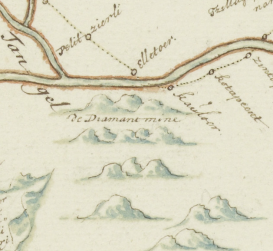Until the mid-eighteenth century, most of the world’s precious stones were mined and consumed in South and Southeast Asia, from deposits that remained under regional control. The rise of Dutch and English East India Companies c. 1600 offered new avenues for European participation in Indian Ocean trade, where gems were prized commodities, at times accounting for as much as 15% of the value of total Asian imports to Europe. “Rare Earth” follows the itineraries of jewellers and merchants who travelled to Asia, the ambassadors, miners, and traders who received them, and naturalists who sought out their testimony and experience of distant environments. Over the course of the seventeenth century, commercial intelligence increasingly displaced classical authorities as a source of data about the composition of the earth and distribution of precious minerals. This project follows the forms of knowledge created, deployed, and appropriated along the commodity chain, to demonstrate the role of gemstones in the intertwined histories of science, the Indian Ocean commercial world, and European imperial expansion.

